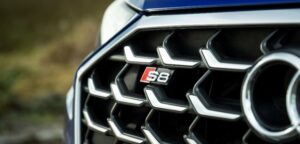
(image from www.audimediacenter.com)
Last month the Regional Court Munich I (Germany) had to decide on a trademark dispute between Audi (the Plaintiff) and the Chinese car manufacturer Nio (the Defendant). The Plaintiff is the proprietor of the German trademarks “S 6” and “S 8” for “Automotive vehicles and their structural parts”. The Defendant has used the designations “es 6” and “es 8” on its website for the advertisement of their automotive vehicles, in particular in Germany.
The Plaintiff contested the Defendant’s advertising in its action for injunctive relief, payment of the pre-litigation costs and the determination of damages. The Plaintiff argues that there is a likelihood of confusion to the trademarks “S 6” and “S 8” registered for the Plaintiff and the signs “es 6” and “es 8” used by the Defendant.
The Court agreed with the Plaintiff. The Court’s scope of assessment for comparing the conflicting signs related only to the signs designating the types of the automotive vehicles. In the Court’s view, the names of the manufacturers (“Audi” and “Nio”) should not be taken into account in the assessment of the signs. In the field of automotive vehicles, it would be common practice for the type designations of automotive vehicles to be perceived as independent trademarks.
In its examination of the conflicting signs, the Court found that the signs are in particular aurally similar, with the result that the signs would be linked to each other in the public’s mind, giving rise to a likelihood of association.
The Court found that the only difference between the signs is the letter “e” which apparently lacks distinctiveness in the present case. In the context of automotive vehicles, the letter “e” will be perceived by the relevant public as a common abbreviation for the term “electric”. In Germany, in particular, “e-mobility” is a current social and political issue. Accordingly, an automotive vehicle with an electric motor is not only referred to as an electric automotive, but also very often in Germany as an “E-Auto” (the German term for “electric car”).
The Court stated that it is therefore to be expected that a not insignificant part of the relevant public would understand the “E” in the contested signs as an indication for an electric car. Consequently, the Court found that there was a risk that consumers would assume that the “es 6” is the “S 6” in the electric version, and thus that both vehicles originate from the same manufacturer.
In this author’s view, the decision seems reasonable and in line with the case law in Germany. The press release published (the full text of the judgment is not available) does not indicate the extent to which the signs were compared. But as far as the Court considers that the letter “E” is descriptive within the Defendant’s signs used for advertising the types of automotive vehicles, it could further be argued that the distinctive character of the contested signs would essentially derive from the elements “s 6” and “s 8” within the Defendant’s signs. In this respect, there would even be an identity of the Defendant’s signs to the Plaintiff’s signs.
Interestingly – and this may be due to the brevity of the press release – it appears that the Court did not consider that there could be an increased level of attention on the part of the relevant public. In the case of cars, and in particular electric cars, it should be assumed that their purchase is the result of careful consideration. In this respect, it can be expected that the relevant consumer has informed itself accordingly and, hence, is able to distinguish the type of automotive vehicles originating from each undertaking. In particular, is should be known that the Plaintiff’s e-versions of their cars are to date usually marked as “e-tron”. According to reports, the Defendant considers the decision to be “wrong” on this ground and has announced to appeal the decision – let’s see what will happen.
_____________________________
To make sure you do not miss out on regular updates from the Kluwer Trademark Blog, please subscribe here.



The decision is reasonable and convincing. In particular that the automotive industry is finding it increasingly difficult to protect its IPRs. I’m curious about what arguments the defendant raised during the court proceedings and will use in a possible appeal.
Thank you for your comment, Ms. Golebiowska. I will let you know as soon as the relevant information has been published.